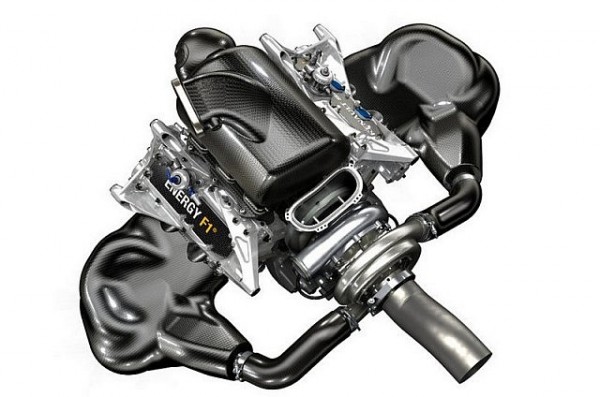Before we move ahead – click on the link and listen to it first: http://www.renaultsport.com/Come-on-feel-the-noise,2630.html?lang=en
So, was that ‘eargasmic’ enough? Well that ladies and gentlemen – is the new Renault F1 engine that will power Red Bull and Toro Rosso in the coming 2014 season. Most likely, it will power Lotus and Caterham too. As the new F1 regulations gets tighter, manufacturers get a lot busier to build a competitive engine and so, last week in Paris, Renault showed the world it’s new 1.6-litre V6 Turbo ‘Energy F1’.
‘‘The sound of the engine is the sum of three principal components, exhaust, intake and mechanical noise. On fired engines, exhaust noise dominates, but the other two sources are not trivial and would be loud if the exhaust noise was suppressed and contribute to the perceived sound of the engines in the car.”
This engine inculcates a new hybridisation system called – ERS a.k.a Energy Recovery System. Other than KERS that recovers energy only from braking, ERS recovers energy from both braking and exhausts. This system is said to be developed to make F1 engines more relavent to road cars and manufacturers.
Renault is adement that the new engine will retain the F1 characteristics – most importantly it’s noise. Despite it being greener, it will still rev up to 15000 RPM, and that the sound is amplified from the turbos. “The engines remain high revving, ultra high output competition engines. Fundamentally the engine noise will still be loud. It will wake you from sleep, and circuit neighbours will still complain. The engine noise is just a turbocharged noise rather than a normally aspirated noise: you can just hear the turbo when the driver lifts off the throttle and the engine speed drops.”
| ENGINE | RS27-2013 | ENERGY F1-2014 |
|---|---|---|
| Displacement | 2.4l | 1.6l |
| Rev limit | 18,000rpm | 15,000rpm |
| Pressure charging | Normally aspirated, pressure charging is forbidden | Single turbocharger, unlimited boost pressure (typical maximum 3.5 bar abs due to fuel flow limit) |
| Fuel flow limit | Unlimited, but typically 170 kg/h | 100 kg/h (-40%) |
| Permitted Fuel quantity per race | Unlimited, but typically 160 kg | 100 kg (-35%) |
| Configuration | 90° V8 | 90° V6 |
| Number of cylinders | 8 | 6 |
| Bore | Max 98mm | 80mm |
| Stroke | Not regulated | 53mm |
| Crank height | Min 58mm | 90mm |
| Number of valves | 4 per cylinder, 32 | 4 per cylinder, 24 |
| Exhausts | Twin exhaust outlets, one per bank of cylinders | Single exhaust outlet, from turbine on car centre line |
| Fuel | Indirect fuel injection | Direct fuel injection |
| Number of Power Units permitted per driver per year | 8 | 5 |
| ENERGY RECOVERY SYSTEMS | ||
| MGU-K rpm | Unlimited (38,000rpm) | Max 50,000rpm |
| MGU-K power | Max 60kW | Max 120kW |
| Energy recovered by MGU-K | Max 0.4 MJ/lap | Max 2MJ/lap |
| Energy released by MGU-K | Max 0.4 MJ/lap | Max 4 MJ/lap |
| MGU-H rpm | – | >100,000rpm |
| Energy recovered by MGU-H | – | Unlimited (> 2MJ/lap) |
Proof that going greener doesn’t mean it’ll be more boring! We absolutely look forward to seeing this engine in action next year.




